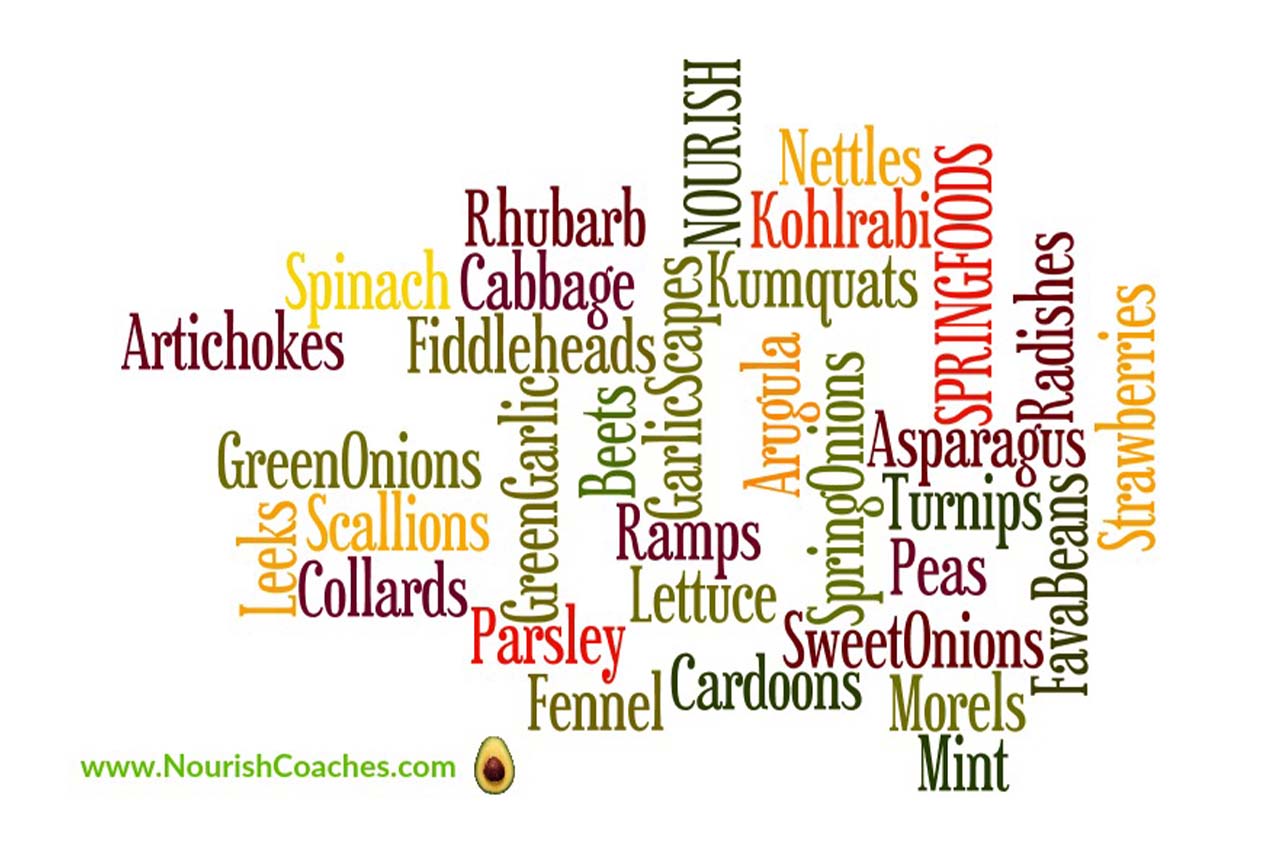Artichokes have a main harvest in the spring when the largest thistles are available (there is a second crop in the fall). Look for artichokes with tight, compact leaves and fresh-cut stem ends.
Arugula tastes best in the cool-weather. It will bolt in warmer weather (begin to flower) which brings a much more bitter flavor to the leaves. The British call arugula “rocket.”
Asparagus is harvested in our area (New Jersey) in April through early June. Fresh, local asparagus in season is phenomenal. Bigger stalks aren’t necessarily tough—they are just more mature plants—easier to chop up and put into other recipes. (click here for our asparagus and mushroom recipe.)
Beets are also in season both in spring and fall and are often sold with their greens, which is a bonus to add to salads or cook for your main vegetable.
Cabbage is a late spring crop that continues to grow all summer.
Cardoons are in the artichoke family but are sold as stalks. They also taste a lot like artichokes; look for firm, heavy-feeling stalks.

Collards grow well in the fall but also have an early crop—a dark leafy green that is very versatile.
Fava beans are a Mediterranean favorite available in the U.S. from early spring through summer.
Fennel tastes like licorice and is a great digestive.
Fiddleheads are baby fern plants spiraled up, and are available in early spring for a short time.

Green garlic is immature garlic and looks like a slightly overgrown scallion.
Garlic scapes are the curled flower stalks of hardnecked garlic varieties grown in colder climates.
Green onions/Scallions often grow wild in some areas and are a great addition to salads and stirfrys.
Kohlrabi is another early spring crop that can be used in slaws and other salads.
Kumquats which look like tiny oblong oranges come into season in late winter and are still available in very early spring.
Leeks look like giant scallions, and can get to about 1 1/2 inches wide, though they are often tough at that size. Delicious in soups and mixed with greens.
Lettuce starts growing in the spring and continues into summer. The early, baby leaves hold a chock-full of nutrition.
Mint starts thriving in the spring.
Morels are mushrooms foraged in the wild in the spring. Look for then at specialty markets and foragers’ stalls at farmers markets.
Nettles are sold at markets by foragers and farmers, but most people get theirs the old-fashioned way: foraging them themselves. If you’re lucky they’re growing as “weeds” in your garden—a great bitter green.
Parsley loves cool-weather and flourishes in the spring.
Peas (garden, snap, snow, etc.) come into season in the spring and continue in most areas well into summer.
Radishes are at their sweet, crunchy best in the spring.

Ramps are foraged in the spring and early summer and sometimes available at farmers markets and specialty stores.
Rhubarb is the first fruit of spring in many areas. (for a complete guide of how to harvest rhubarb, check out the site Happy DIY Home)
Spinach loves cooler weather. The young leaves are great raw and in salads.
Spring onions are simply regular onions that farmers pull from the field to thin the rows in spring and early summer.
Strawberries may be in markets year round, but they are best when local and seasonal. They usually begin in our local area (New Jersey) in late May, early June.
Sweet Onions are available in spring and summer.
Turnips and their greens are especially good in the spring, although they do have a fall crop.
Sources borrowed from: Jersey Fresh and Local Foods
More specific time frames: connect with Sustainable Table
To learn more about the benefits of eating with the seasons – specifically spring – listen to our Nourish Noshes podcast titled Seasonal Eating: Spring







One thought on “Seasonal Eating: Spring Crops”